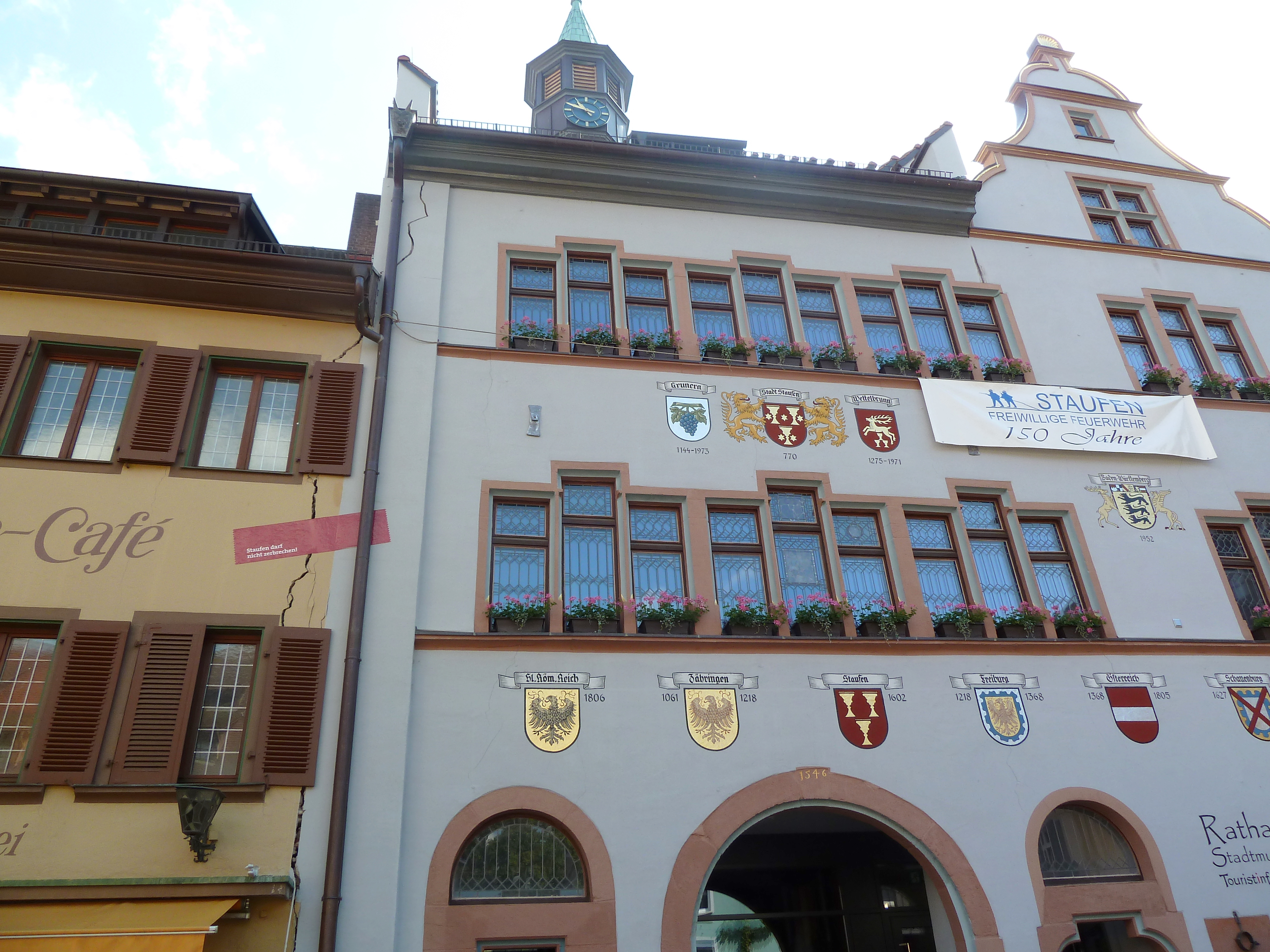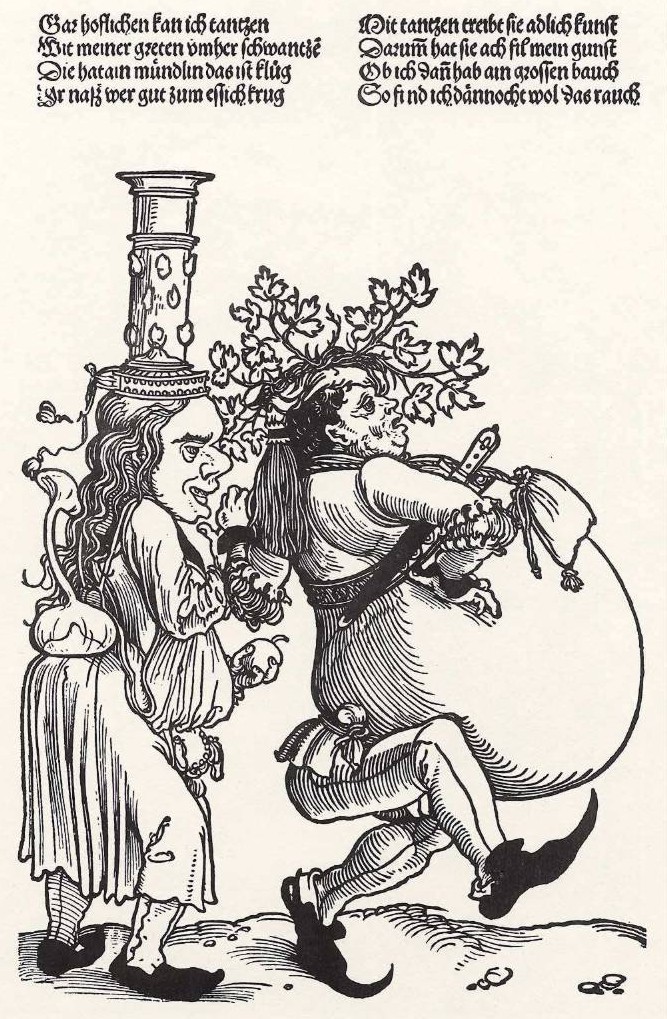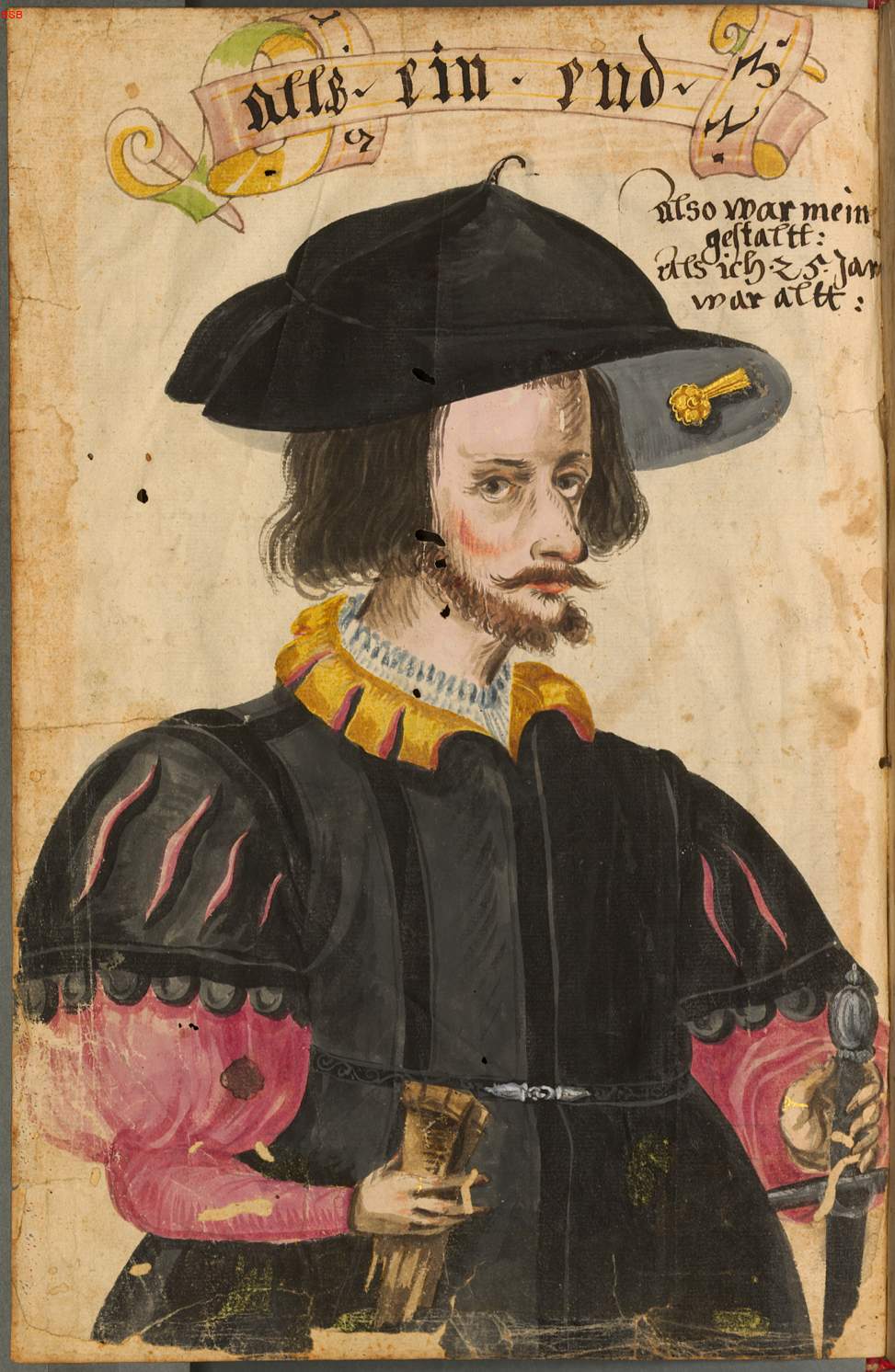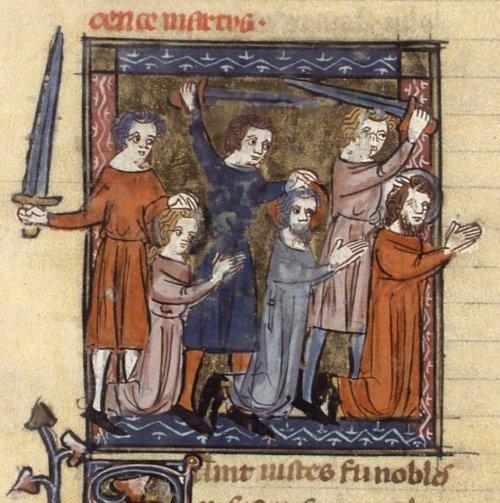|
Hans Sixt
Hans Sixt or Sixtein or Sigstein from Staufen (von Staufen (c.1490 – c.1550) was a 16th-century German wood sculptor in the tradition of Hans Wydyz, remembered for his ornate altarpieces. Mid-20th century academics often (unhelpfully) refer to him simply as Staufen (his birthplace rather than his name). Life He lived in Staufen im Breisgau and worked nearby in Freiburg im Breisgau. He appears to have trained under Tilman Riemenschneider, or his followers, in Würzburg. He then worked with under Hans Wydyz alongside Wydyz's sons, Hans Weiditz and Christoph Weiditz. He worked with Wydyz's partner, Hans Baldung, who painted Sixt's carvings. His signed works begin in 1515. His most important work, the Locherer chapel in Freiburg Minster was begun in 1521 and completed in 1524. From 1534 he supplanted Wydyz as the principal sculptor in the area. He died around 1550 in Staufen. Recognition Sixtgasse in Staufen is named after him. In 1937 the playwright Hermann Ays wrote the ... [...More Info...] [...Related Items...] OR: [Wikipedia] [Google] [Baidu] |
Freiburg Muenster Plan
Freiburg im Breisgau (; abbreviated as Freiburg i. Br. or Freiburg i. B.; Low Alemannic: ''Friburg im Brisgau''), commonly referred to as Freiburg, is an independent city in Baden-Württemberg, Germany. With a population of about 230,000 (as of 31 December 2018), Freiburg is the fourth-largest city in Baden-Württemberg after Stuttgart, Mannheim, and Karlsruhe. The population of the Freiburg metropolitan area was 656,753 in 2018. In the south-west of the country, it straddles the Dreisam river, at the foot of the Schlossberg. Historically, the city has acted as the hub of the Breisgau region on the western edge of the Black Forest in the Upper Rhine Plain. A famous old German university town, and archiepiscopal seat, Freiburg was incorporated in the early twelfth century and developed into a major commercial, intellectual, and ecclesiastical center of the upper Rhine region. The city is known for its medieval minster and Renaissance university, as well as for its high standa ... [...More Info...] [...Related Items...] OR: [Wikipedia] [Google] [Baidu] |
Hans Wydyz
Hans Wydyz or Weiditz the Elder (c.1470–1520) was a sculptor and artist operating in Germany in the early 16th century. His work is usually signed H. W. near the base. He sculpted mainly in wood and also created woodcuts. His work is not only highly accurate on a technical level, but is also abnormally charged with emotion, usually due to the expression on faces, hand gestures, poses etc. Life Hans Wydyz the Elder is thought to come from the Upper Rhine region of Germany, probably born in or near Strasbourg, as his work appears to evolve from the Strasbourg tradition. He was probably the son of the wood engraver Bartholomaus Wydyz or Weiditz from Meissen. He was active in the late 15th and early 16th centuries mainly in Saxony and ( Freiburg im Breisgau) and later in Strasbourg. From 1497 to 1510 he lived with his wife in Augustinergasse (now Grunwalderstrasse) in Freiburg His sculpture of Adam and Eve in boxwood and linden dates from around 1505 and is one of the fi ... [...More Info...] [...Related Items...] OR: [Wikipedia] [Google] [Baidu] |
Staufen Im Breisgau
Staufen im Breisgau (High Alemannic: ''Staufe im Brisgau'') is a German town in the Breisgau-Hochschwarzwald district of Baden-Württemberg. It had a population of approximately 8,300 in 2019. General The city of Staufen im Breisgau lies in the district of Breisgau-Hochschwarzwald in the German state of Baden-Württemberg. Staufen has approximately 7,700 inhabitants and forms, together with the community of Münstertal, Black Forest, a community administrative unit. It is noted in history and culture for its association with Faust who, according to one source, died in or near Staufen around 1540. Geography Staufen lies at the foot of the Black Forest at the exit from the Münstertal. The Black Forest valley of Neumagen goes here directly over into the Rhine plain. The piedmont of the Black Forest is less distinct. North of the valley exit, the steeply rising old castle ruins dominates; to the southwest begins the hilly landscape of the Markgräflerland. Staufen lies on the bor ... [...More Info...] [...Related Items...] OR: [Wikipedia] [Google] [Baidu] |
Freiburg Im Breisgau
Freiburg im Breisgau (; abbreviated as Freiburg i. Br. or Freiburg i. B.; Low Alemannic German, Low Alemannic: ''Friburg im Brisgau''), commonly referred to as Freiburg, is an independent city in Baden-Württemberg, Germany. With a population of about 230,000 (as of 31 December 2018), Freiburg is the List of cities in Baden-Württemberg by population, fourth-largest city in Baden-Württemberg after Stuttgart, Mannheim, and Karlsruhe. The population of the Freiburg metropolitan area was 656,753 in 2018. In the Southern Germany, south-west of the country, it straddles the Dreisam river, at the foot of the Schlossberg (Freiburg), Schlossberg. Historically, the city has acted as the hub of the Breisgau region on the western edge of the Black Forest in the Upper Rhine Plain. A famous old German university town, and Roman Catholic Archdiocese of Freiburg, archiepiscopal seat, Freiburg was incorporated in the early twelfth century and developed into a major commercial, intellectual, an ... [...More Info...] [...Related Items...] OR: [Wikipedia] [Google] [Baidu] |
Tilman Riemenschneider
Tilman Riemenschneider (c. 1460 – 7 July 1531) was a German sculptor and woodcarver active in Würzburg from 1483. He was one of the most prolific and versatile sculptors of the transition period between late Gothic and Renaissance, a master in stone and limewood. Biography Tilman Riemenschneider was born around the year 1460 at Heiligenstadt im Eichsfeld in present-day Thuringia. When Riemenschneider was about five years old, his father was involved in a violent political conflict, the , so the family had to leave Heiligenstadt and all their possessions. They resettled in Osterode, where his father became Master of the Mint (a good position at that time) and where Riemenschneider spent his childhood years. Riemenschneider likely came to Würzburg for the first time at the age of 18 in 1478/79. His uncle served as notary and financial advisor to the bishop there, but he did not stay for long. Around 1473, Riemenschneider learned the trade of sculpting and woodcarving, l ... [...More Info...] [...Related Items...] OR: [Wikipedia] [Google] [Baidu] |
Würzburg
Würzburg (; Main-Franconian: ) is a city in the region of Franconia in the north of the German state of Bavaria. Würzburg is the administrative seat of the ''Regierungsbezirk'' Lower Franconia. It spans the banks of the Main River. Würzburg is situated approximately east-southeast of Frankfurt am Main and approximately west-northwest of Nuremberg (). The population (as of 2019) is approximately 130,000 residents. The administration of the ''Landkreis Würzburg'' ( district of Würzburg) is also located in the town. The regional dialect is East Franconian. History Early and medieval history A Bronze Age (Urnfield culture) refuge castle, the Celtic Segodunum,Koch, John T. (2020)CELTO-GERMANIC Later Prehistory and Post-Proto-Indo-European vocabulary in the North and West p. 131 and later a Roman fort, stood on the hill known as the Leistenberg, the site of the present Fortress Marienberg. The former Celtic territory was settled by the Alamanni in the 4th or 5th century ... [...More Info...] [...Related Items...] OR: [Wikipedia] [Google] [Baidu] |
Hans Weiditz
Hans Weiditz the Younger, Hans Weiditz der Jüngere, Hans Weiditz II (1495 Freiburg im Breisgau - c1537 Bern), was a German Renaissance artist, also known as The Petrarch Master for his woodcuts illustrating Petrarch's ''De remediis utriusque fortunae'', or ''Remedies for Both Good and Bad Fortune'', or ''Phisicke Against Fortune''. He is best known today for his very lively scenes and caricatures of working life and people, many created to illustrate the abstract philosophical maxims of Cicero and Petrarch. Like most artists in woodcut he only designed the woodcuts, leaving the block-cutting to a specialist "''Formschneider''" (sometimes Jost de Negker in his Augsburg period) who pasted the design to the wood and chiselled the white areas away. The quality of the final woodcuts, which varies considerably, depended on the skill of the cutter as well as the artist. Weiditz was unfortunate in that his publishers went bankrupt part way through the production of his two longest series ... [...More Info...] [...Related Items...] OR: [Wikipedia] [Google] [Baidu] |
Christoph Weiditz
Christoph Weiditz (1498, Strasbourg or Freiburg im Breisgau - 1559, Augsburg) was a German painter, medalist, sculptor and goldsmith. His artistic development goes from a naïve-German record of the Renaissance influences to a clever mannerism. Christoph Weiditz is one of the four most important German medalist of the Renaissance, alongside Hans Schwarz, Friedrich Hagenauer and Matthes Gebel. Life He was the son of Hans Wydyz, Wyditz or Widitz (ca. 1460 - 1520), a sculptor who worked in Freiburg between 1497 and 1514. He was also the brother of Hans Weiditz, the Younger (1493–1537), a famous woodcut artist. Between 1528 and 1529 he stayed in Spain and made drawings of the folk costumes the inhabitants of the Iberian Peninsula. Gallery Image:Weiditz Trachtenbuch 001.jpg, ''Auf die Manier gand Indianische Weiber, Ist nit mer dan aine herrauss kumen.'' Image:Weiditz Trachtenbuch 008-009.jpg, ''Das Ist ain Indianer der ligt auff dem Rucken, vnnd Wirfft ain holtz au ... [...More Info...] [...Related Items...] OR: [Wikipedia] [Google] [Baidu] |
Hans Baldung
Hans Baldung (1484 or 1485 – September 1545), called Hans Baldung Grien, (being an early nickname, because of his predilection for the colour green), was a painter, printer, engraver, draftsman, and stained glass artist, who was considered the most gifted student of Albrecht Dürer and whose art belongs to both German Renaissance and Mannerism. Throughout his lifetime, he developed a distinctive style, full of colour, expression and imagination. His talents were varied, and he produced a great and extensive variety of work including portraits, woodcuts, drawings, tapestries, altarpieces, and stained glass, often relying on allegories and mythological motifs. Life Early life, c. 1484–1500 Hans was born in Schwäbisch Gmünd (formerly Gmünd in Germany), a small free city of the Empire, part of the East Württemberg region in former Swabia, Germany, in the year 1484 or 1485. Baldung was the son of Johann Baldung, a university-educated jurist, who held the office of leg ... [...More Info...] [...Related Items...] OR: [Wikipedia] [Google] [Baidu] |
St Vitus
Vitus (), whose name is sometimes rendered Guy or Guido, was a Christian martyr from Sicily. His surviving hagiography is pure legend. The dates of his actual life are unknown.Basil Watkins, ''The Book of Saints: A Comprehensive Biographical Dictionary'', 8th rev. ed. (Bloomsbury, 2016), p. 758.Donald Attwater, ''The Avenel Dictionary of Saints'' (Avenel Books, 1981), p. 338. He has for long been tied to the Sicilian martyrs Modestus and Crescentia but in the earliest sources it is clear that these were originally different traditions that later became combined.David Hugh Farmer, ''The Oxford Dictionary of Saints'', 5th rev. ed. (Oxford University Press, 2011), s.v. "Vitus (Guy), Modestus, and Crescentia". The figures of Modestus and Crescentia are probably fictitious. According to his legend, he died during the Diocletianic Persecution in AD 303. In the Middle Ages, he was counted as one of the Fourteen Holy Helpers. In Germany, his feast was celebrated with dancing before his ... [...More Info...] [...Related Items...] OR: [Wikipedia] [Google] [Baidu] |
_jm1812.jpg)
_4029.jpg)







